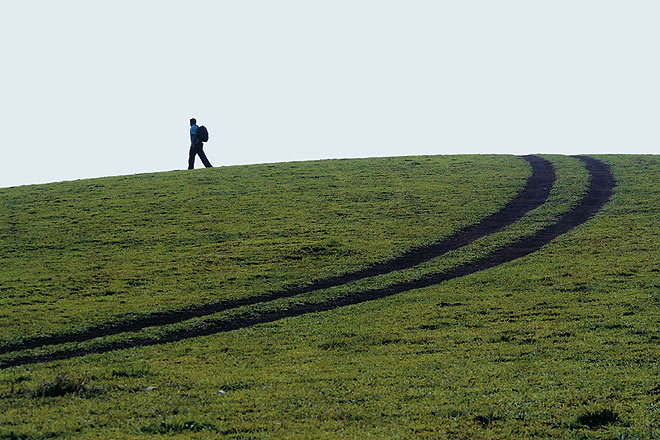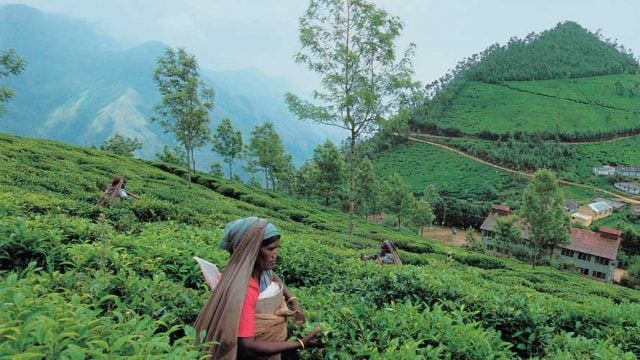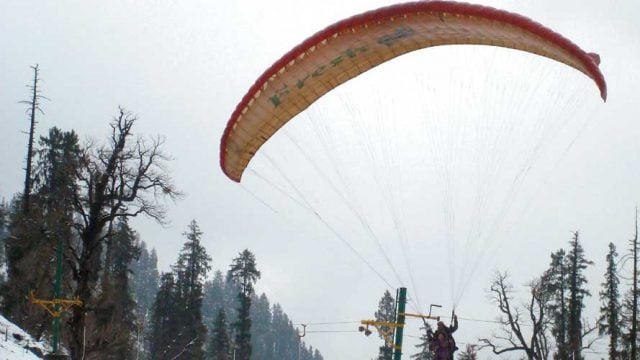When you’ve made up your mind to take the road less
After hours of trawling the internet, the ‘enchanting valleys’, ‘lush green meadows’ and ‘meandering rivulets’ of Vagamon seem passé. I am more interested in the town itself. The otherwise annoying Google has been silent on the subject and I am hooked (at the cost of my life, judging by this journey). That it is ‘one of the first British tea plantations in Kerala’ and has been voted one of ‘50 must-see destinations in India’ only whets my appetite.
The British had a knack for snapping up picture-postcard perfect, misty and chilly hills. Homesick and sunburnt, this is where they fled as soon as business in the dusty plains was taken care of, and hill stations were instantly catapulted to ‘elite getaway destination of choice’ status. Not surprisingly, when the British moved out, Bollywood (notably Shammi Kapoor) and nervous newly-weds moved in. Now, of course, you can’t spot a cobblestone for all the seething crowds.
However, at 1,100m above sea level, with not a blip on the virtual map and connected to the world by a lone highway, Vagamon could well be that extinct British hill town caught in a colonial time warp. At least I hope it is.
I’m in for a disappointment, though. There are 30-odd sorry-looking buildings on either side of the road. Most of these are matchbox-sized shops, the sort where everything from broomsticks to shampoo is crammed together and there is only one brand of chocolate. A few autorickshaws are idling around and there are more shops selling multi-flavoured teas and locally-manufactured bottles of unfamiliar juices and oils. The ‘lush green meadows’ are divided into huge tea plantations, a few of which have been turned into resorts. This cannot be Vagamon. I don’t see any gabled roofs or stone cottages with trimming, an abandoned clocktower, town hall or even just a church. Leave alone the wrought iron lamp posts, there is not even a police station in sight!
The comically stunted hills of Vagamon make me think of young-fold mountains. There is nothing angular or streamlined about the Ghats — no sharp edges, no well-defined lines and no imposing heights. The land looks flattened, like a playground for giants where they have rolled, their bumpy bodies smoothing out depressions and rounding crests. Everything is worn smooth, the edges of the U-shaped valleys are perfectly shaped giant-sized stools and the landscape has a general roughly hewn, stunted look about it. The cloudy skies cast the meadows in a soft, diffused glow, their every move across the sun is magnified and tracked on the ground below. Their shifting shadows are like a spectacular light show that plays all day on the hills and lakes.
The thick film of velvety grass on the meadows and hillocks (giving Vagamon the moniker motta mala or ‘bald hills’ in Malayalam), makes it ideal for adventure sports, mainly paragliding. I, however, would rather explore the land on foot: there are several hiking trails around to choose from and if you’re staying in one of the resorts, you might not even have to venture outside its bounds to hike.
The three prominent religions — Christianity, Islam and Hinduism — have their own exclusive hills: Kurusimala, Murugan Para and Thangal Para. All three hills stand cheek-to-cheek. Kurusimala’s main attraction is a statue of St Thomas at its peak. A giant clay peacock is perched atop Murugan Para, standing guard over the temple, which has Stone Age carvings. Thangal Para pulls soul-thirsty travellers into its ancient cave with an unspoken promise to soothe all aches with its wrinkled, age-old wisdom. However, if your soul is not the only thing that’s hungry, you can dash down to the Indo-Swiss Project Diary Farms run by Christian missionaries on the other side of Kurusimala.
Vagamon has just a handful of resorts and hotels. I’m staying at the 250-acre Vagamon Heights, which promises secluded cottages, private lakes, rose gardens and a free pick-up from town. The only buildings in this massive property are five cottages and the reception, scattered at liberal distances, which makes for a lot of walking. The staff is quick to warn you not to venture out after dark to avoid running into the local wildlife. However, don’t be surprised if a snake suddenly darts across the path in front of you in broad daylight.
The staff is indulgent: most of them have worked on the plantations all their lives and are the best guides around the area. They’ll teach you how to fish in the lakes and to pluck tea leaves, direct you to the best places to hike, take you on a gravity-defying, nerve-jangling off-roading expedition and introduce you to their assortment of pets. They do a bang-up job of regular hospitality as well, make no mistake. They will cart — by jeep — piping hot meals to whichever part of the resort you fancy, set candle-lit dinners on your cottage verandah, arrange for jeeps to take you to the resort gates (snake or no snake, it isn’t easy to brave the rugged paths and the thick jungle that leads to the gates), do a weather check and carefully plan your hikes, fitting you out with a picnic basket if you like.
I quickly fall into the rhythm of their languid days. I take my siesta on the lake, and dinner under a moonlit sky, and spend chilly nights curled up in my cosy cottage. It’s a good thing they serve only basic home-style food!
Every other hill station I know has been consumed by commercialization and regurgitated as a giant ‘spot’. Mall roads, momo stalls, Punjabi dhabas, sunset points, suicide points, handicrafts shops, Tibetan markets and clocktowers…doesn’t matter which part of the country: if you’ve seen one, you’ve seen them all. Luckily for Vagamon, the British never settled here: they went higher up to Munnar, leaving it to develop its individual personality, and it escaped being reduced to a grotesque, colonial travesty. However, Vagamon’s descent into a ‘spot’ has already begun. The tell-tale signs stick out like a sore thumb: there are hoardings selling ‘prime location land’ and the busloads of tourists seem to be taking over its untouched meadows. Will it join the bandwagon of popular hill stations? Only time will tell.
The information
Getting there: Cochin International Airport, the nearest airport, is 120km away. The journey by road from Kochi will take about 4hrs, but there are no direct buses to Vagamon: you’ll have to reach Kottayam (50km) or Pala (67km) from Kochi, and take a connecting bus to Vagamon. The frequency of buses from Kottayam to Vagamon (64km) is low and it takes close to two hours to reach Vagamon from here by road. Pala is 30km from Kottayam, and from there buses leave every half an hour. To reach Vagamon, you have to go via precarious hill roads, so it’s best to reach it before sundown. Kottayam is also the nearest railhead.
Getting around: Vagamon is a very small town, and you’ll find autorickshaws in the main market, which can take you to the common tourist sights; the rates are negotiable. Ask your hotel/resort to fix up an auto to pick you up from where you’re staying.
Where to stay: Vagamon Heights (vagamonheights.com) is the ideal resort to stay at: it’s spread over 250 acres. The cottages — single, double and deluxe — are equipped with all modern facilities and they are spaced at liberal distances from each other in the middle of the rolling plantation meadows. Vagamon HideOut (0484-2610946, 9447156000, 9447155000; [email protected]) is an eco-friendly SAJ Heritage resort that has options for Ayurveda, yoga and meditation. Accommodation options include stone, wooden and mud cottages. Ananya Hill Resort (9847030307; [email protected]) is spread over 10 acres of lush green land. Accommodation options include deluxe and standard cottages.
Kerala
Kottayam
Vagamon
Leave a Reply
You must be logged in to post a comment.





